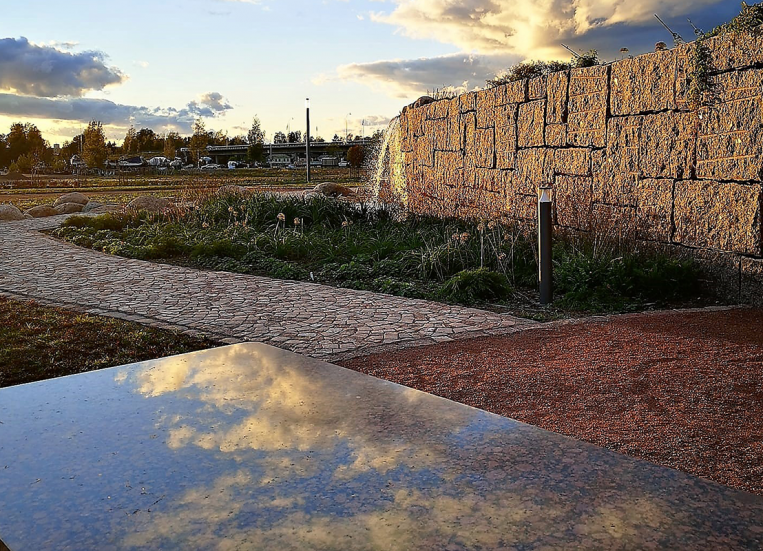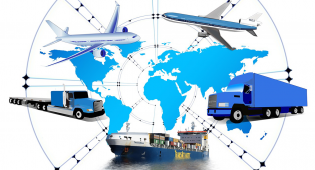The impact of global logistics on the Finnish export of natural stone
05.10.2021Granite is one of most durable natural materials. It has been used in construction since ancient times. Granite is formed from a combination of feldspar, quartz, mica and a few other minerals in a hard igneous rock.
The color of granite depends on its mineral composition. The Nordic countries have natural stone deposits with wide range of granite colors. Finnish red and brown rapakivi granites are well-known in international markets.
Natural stone production in South-Eastern of Finland
Granite’s strength, resistance to sudden temperature changes, pollution and moisture penetration, increased hardness, durability and density, allows its easy use in the construction and decoration of all types of buildings, both residential and offices, and shops. Many unique architectural monuments are created from Finnish rapakivi granite. The granite quarrying industry has a long history in Finland, with natural stone quarrying stretching back over hundreds of years.
Many unique architectural monuments are created from Finnish rapakivi granite.
In South-Eastern Finland, there are granite quarries that provide popular export material in whole large blocks. These blocks are easy to transport in vessels, containers, and also on railroad wagons, and on trucks. According to KIVI Ry, almost 90 per cent of the total production of Finnish granite is exported. The port of HaminaKotka loads granite blocks into containers and then onto vessels to deliver to European and Asian clients. A part of export goes to the eastern neighbour the Russian Federation. Typically, deliveries to Russia is carried out using trucks. Approximately 2,000 tons of Finnish granite is transported by truck to Russian clients annually.
Since 2000, natural stone production in Finland has gradually increased. Finnish granite was in high demand in Italy, Spain, Germany and Asia. During the same period, there was a gradual increase in export. There was a sudden decline in granite export in 2008–2009, which experts attribute to the global financial crisis. Subsequent growth in natural stone exports peaked at 431,242 tons. At the same time, there was an increase in natural stone imports and an intensification of competition with Asian producers. Finnish granite exports have been declining for the past few years
The main miners of South-Eastern Finland estimated that the stone material extraction volume is just over 250,000 m3 and the current production of granite blocks is 25,000 m3 a year.
Export growth did not recover from 2012 to 2020.
Changes brought about by the pandemic
The Global Corona-pandemic has brought about significant changes in global trade. The changes in logistics affected the stone industry; delays in Chinese ports at the beginning of the pandemic contributed to transport delays. There were difficulties in finding containers for the transportation of stone and there were problems to finding vessels to transport containers to their destination.
On the other hand, Chinese stone producers facing transport obstacles meant that they were less represented in the main natural stone markets. Currently, competition with Asian granite is not so meaningful in the granite industry. If the import of granite shows slowing growth, at the same time the export of granite is also reduced significantly. Disruptions in international trade and the resulting problems in container traffic have resulted in significantly fewer containers loaded with granite to be exported through the port of Haminakotka than before the pandemic. The only method of transportation without reduced delivery volumes is truck transportation. Twice a week trucks are crossing the Finnish-Russian border to provide Russian clients with Finnish granite.
We hope that individuals, municipalities and cities will find worthy uses for rapakivi granite.
The project “History and Future of Natural Stones in Architecture, NaStA” promotes the natural stone market and supports trade across the Finnish-Russian border and beyond. The project is funded by Southeast Finland – Russia CBC 2014–2020. The purpose of the project is to support stone companies by responding to their current needs, facilitating the expansion of the operating environment, and providing them with information on many relevant topics, such as, for example, logistics.
The current situation in the global natural stone market has uncertain economic prospects. Still, there is hope that the export of granite will return to the previous levels. We hope that individuals, municipalities and cities will find worthy uses for rapakivi granite. These might be cities in Finland or abroad. In case of massive restoration work undertaken in St. Petersburg, Finnish stone miners are ready to provide identical granite to the original stone used in the city architecture. This is the same granite that has been creating St. Petersburg’s unique look for many hundreds of years. This granite has decorated and made up many objects of historical heritage in St. Petersburg and keeping them standing despite the harsh Northern climate factors like rains, frost, snow, and wind.

































